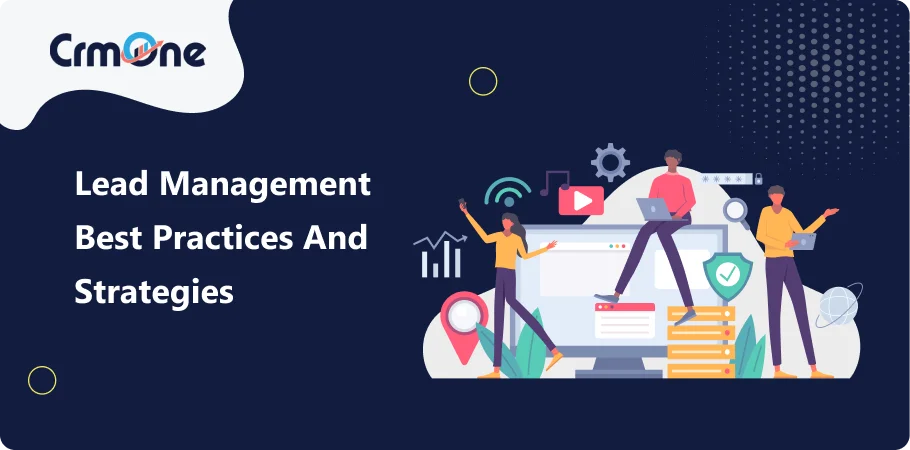In today’s bustling market, navigating the path to sales success is akin to mastering a complex dance. Leads management is at the heart of this dance, a strategy that can be the difference between a thriving business and one that struggles to keep up when done right. Lead management best practices are more than just buzzwords; they are the blueprint for turning potential interest into tangible sales. This means understanding and implementing an effective lead management process, which ensures every potential customer is nurtured and guided toward purchasing.
But how does one ensure that this process is not just happening but thriving? It starts with combining lead generation efforts and CRM. These aren’t isolated tasks; instead, they’re pieces of a giant puzzle that, when connected, unlock the full potential of your sales force. Think of lead management software as the tool that combines it, streamlining operations and offering insights that might have been missed.
This blog aims to demystify these concepts, breaking down best practices into actionable steps that can transform your approach to sales. Whether you’re new to the scene or looking to refine your strategy, we focus on giving you the knowledge to implement these best practices in lead management. From boosting your lead generation efforts to optimizing your CRM integration, we’re here to guide you through elevating your sales game in today’s competitive landscape.
Lead Management best practices
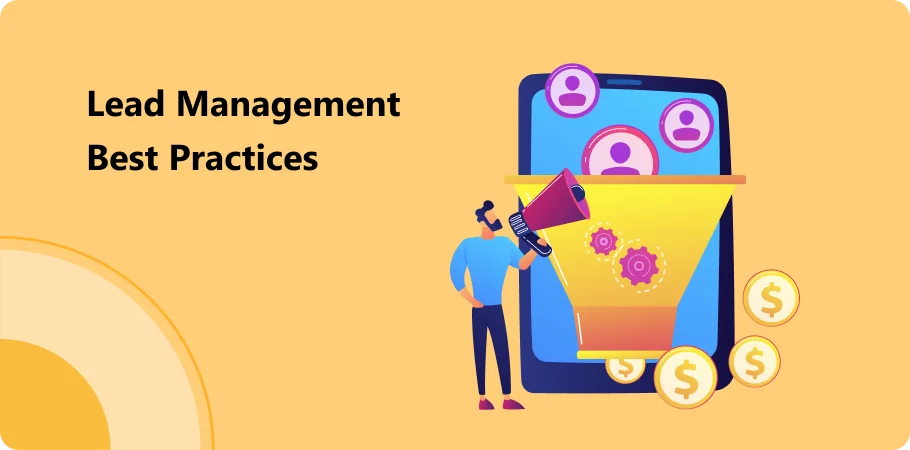
Lead management is a strategic approach to managing potential customers from the initial point of interest to the final sale. It’s about nurturing these relationships at every stage, ensuring no opportunity is lost. This process is pivotal for businesses aiming to convert inquiries into sales, fostering a better understanding of customer needs and behaviors.
Lead management is about tracking and managing every interaction with potential customers, often called leads. It’s a bridge between marketing efforts and sales outcomes, designed to manage and convert leads into customers effectively. Lead management is critical because it organizes leads, prioritizes follow-up activities, and ensures efficiency in the sales cycle. It helps businesses focus on the most promising leads, increasing conversion rates and sales.
Critical Components of Effective Lead Management
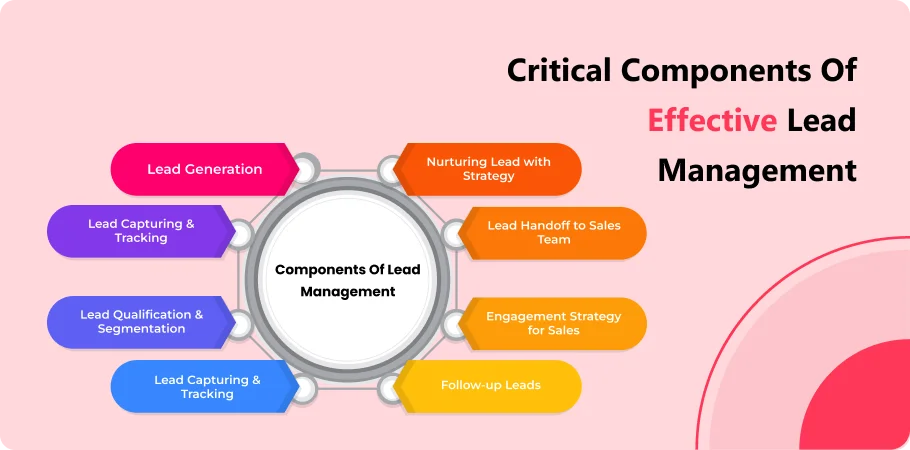
Centralized Database:
A centralized database is crucial for storing all lead information in one place. This allows for easy access and management of lead data, ensuring that marketing and sales departments have up-to-date information. A unified database aids in maintaining a consistent and personalized approach to interacting with potential customers.
Marketing and Sales Alignment:
Effective lead management requires seamless collaboration between marketing and sales departments. Marketing generates leads, while sales focus on converting those leads into customers. Aligning these teams ensures they work towards a common goal, using shared strategies and information to nurture and close leads.
Efficient Lead Qualification:
Not all leads are created equal. An effective lead management process includes criteria for scoring and qualifying leads. This helps identify which potential customers are most likely to convert, allowing teams to allocate their time and resources more effectively.
Consistent Follow-Up Procedures:
Timely and personalized follow-up is key to keeping potential customers engaged. Establishing standard procedures for follow-up ensures that every lead is remembered and that every interaction moves the lead closer to a sale.
By understanding and implementing these key components, businesses can develop a robust lead management strategy that aligns marketing efforts with sales goals, nurtures potential customers throughout the buying journey, and ultimately drives more sales.
Lead Management Best Practices

Businesses often seek out the most effective practices to optimize their lead management procedure to convert more leads into sales. These best practices streamline operations and ensure that sales teams focus their efforts where they count the most.
Lead Scoring:
One of the cornerstone practices in lead management is lead scoring. This strategy involves assigning a value to each lead based on their actions and level of engagement. By scoring leads, companies can determine which ones are more likely to convert, allowing sales teams to prioritize their follow-up efforts on the suitable leads.
Automatically Assign Leads:
Utilizing an automated system to assign leads to the appropriate sales personnel automatically can drastically improve the sales process. This ensures that new leads are quickly engaged and moved through the sales funnel efficiently.
The Role of Content Marketing in Nurturing Leads
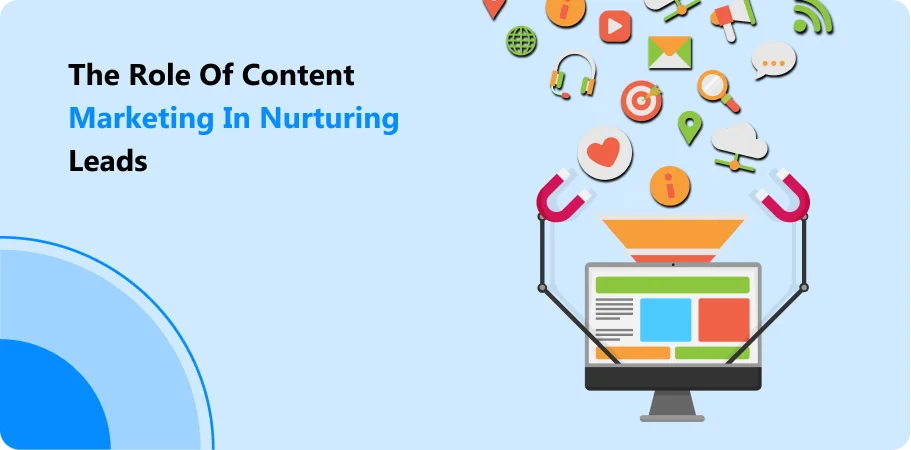
Nurturing with Content:
Offering valuable and relevant content helps maintain a personalized experience for leads at different stages of the buying journey. Content marketing is pivotal in educating and engaging leads, providing them with the information they need to make informed decisions.
Tailored Topics:
Content can address specific pain points and interests relevant to each stage of the buying journey. For example, top-of-the-funnel leads might receive informative blog posts, while middle-funnel leads get in-depth case studies, and bottom-of-the-funnel leads see product comparisons or free trials.
Dynamic Calls to Action:
CTAs can be adjusted based on lead behavior. Someone just browsing might see a “Learn More” button, while a more engaged lead might see a “Schedule a Demo” option.
Nurturing Relationships:
Consistent, personalized content keeps your brand top-of-mind and fosters trust with leads, ultimately guiding them smoothly towards conversion.
Utilizing Automation and AI in Lead Management

Automated Processes:
Incorporating automated processes in your CRM system can save time and eliminate the risk of insufficient data entering your system. Automation can help with tasks such as lead distribution, follow-up scheduling, and data entry.
AI and Insightful Reporting Dashboards:
Artificial Intelligence (AI) can offer advanced insights into lead behavior, predicting which leads are more likely to convert. Additionally, insightful reporting dashboards provide real-time data on the effectiveness of lead management strategies, allowing for timely adjustments and optimizations. By following and adopting these best practices, businesses can ensure their lead management efforts are as effective as possible.
Lead Qualification and Prioritization:
AI can analyze vast amounts of data on leads, including demographics, online behavior, and past interactions, to identify the hottest prospects. This helps sales teams focus their efforts on leads most likely to convert.
Streamlined Workflows and Communication:
Repetitive tasks like data entry, email follow-ups, and scheduling meetings can be automated, freeing up salespeople’s time for more strategic activities. Chatbots powered by AI can answer basic questions and qualify leads 24/7, keeping communication flowing even outside business hours.
Personalized Lead Nurturing:
Automation can send personalized email sequences based on lead behavior and interests, nurturing them towards a purchase decision. AI can analyze customer interactions and suggest relevant content or offers, keeping leads engaged throughout the sales cycle.
Book a CrmOne Demo
Experience the CrmOne simplicity and power. Our experts will show you the best ways to use it and answer your questions in real time. See how CRMOne fits your needs.
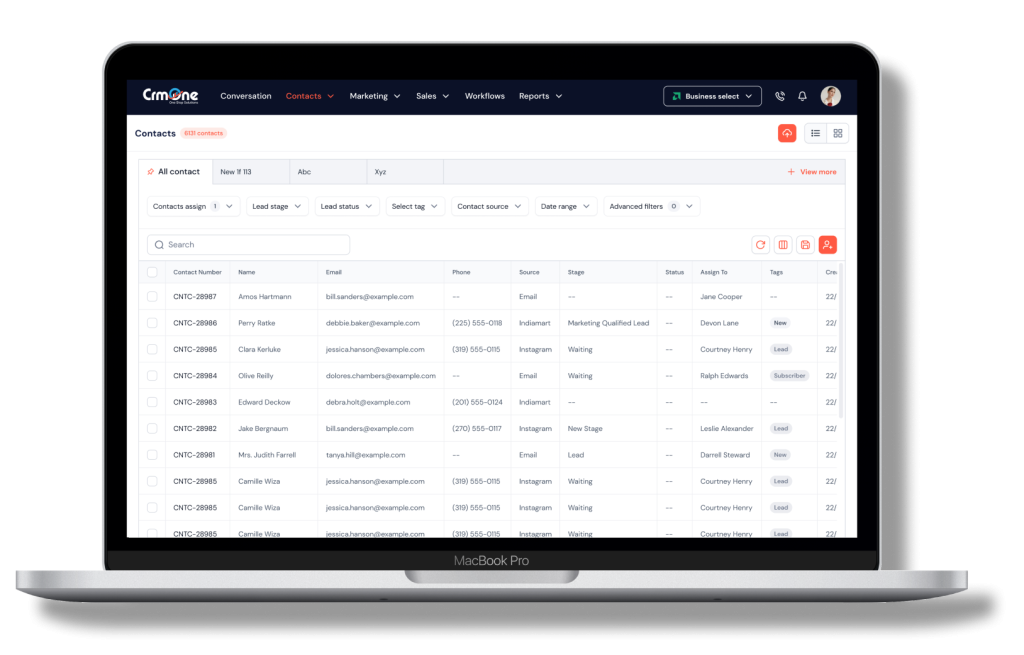
Importance of Aligning Sales and Marketing Teams

Boosts Revenue and Growth:
When sales and marketing work together, they create a smooth customer journey with consistent messaging. This leads to more qualified leads, higher conversion rates, and ultimately, more sales and revenue growth. Studies have shown that companies with strong sales and marketing alignment achieve significantly faster growth rates.
Improves Marketing ROI:
Marketing efforts are more effective when they target the right audience with the right message. Sales insights can help marketing create campaigns that resonate with potential customers, leading to a better return on investment for marketing activities.
Increases Efficiency:
When sales and marketing are aligned, there’s less wasted effort. Marketing generates high-quality leads that sales can focus on converting, and sales provide valuable feedback to marketing on what’s working and what’s not. This eliminates duplication of efforts and frees up resources for both teams.
Enhances Customer Experience:
Aligning sales and marketing ensures a consistent brand message across all touchpoints. This creates a smoother buying experience for customers, fostering trust and loyalty.
Improves Team Morale:
When sales and marketing work together towards a common goal, it fosters better collaboration and communication. This can lead to a more positive work environment and increased morale for both teams.
Tools and Technologies That Enhance the Lead Management Process
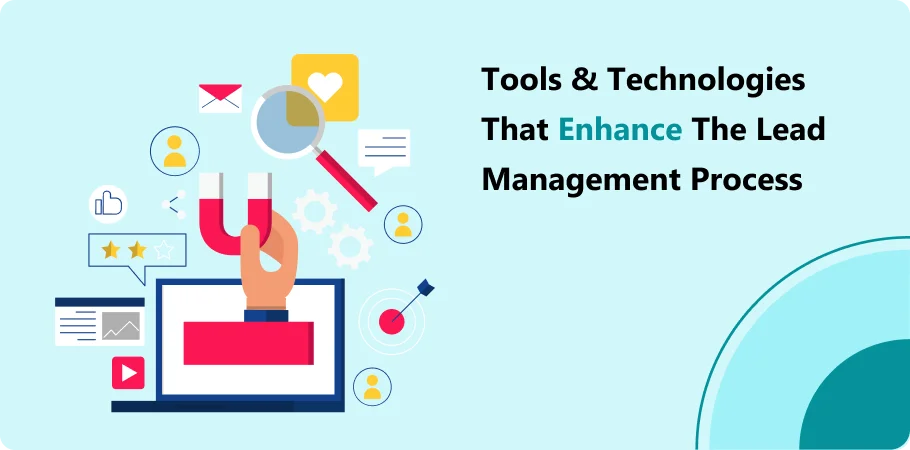
Lead Collection and Management Tools:
Various tools and technologies can significantly streamline the lead management procedure. For example, CRM systems can automate lead collection, categorization, and scoring, making managing and nurturing leads throughout their journey easier.
Automated Assigning and Follow-ups:
Automation tools can also assist in assigning leads to the appropriate sales personnel based on specific criteria such as geographic location or lead score. Furthermore, these tools can automate follow-up emails and tasks, addressing every lead.
Companies can significantly enhance their lead management procedure by mapping the lead journey, ensuring that sales and marketing teams are aligned, and leveraging the right tools and technologies. This improves the efficiency of managing leads and increases the chances of converting more leads into paying customers, driving the company’s growth and success.
Enhancing Lead Generation Efforts
In today’s competitive business world, enhancing lead generation efforts is key to attracting high-quality leads that are more likely to convert into customers. Companies can improve their lead generation processes significantly by adopting innovative strategies, analyzing and optimizing lead sources, and leveraging social media and digital marketing.
Leverage Service Teams:
Your service teams interact with customers daily and understand their needs and pain points. Encouraging these teams to identify potential leads during the early stages of customer interaction can efficiently generate high-quality leads.
Sales Demo as a Lead Magnet:
Offering a free sales demo can attract prospects at a decision-making stage. This not only provides immediate value but also allows you to collect data on potential customers who are highly interested in your product or service.
Market Research for Better Targeting:
Conducting market research helps identify the most effective channels and strategies for lead generation. Understanding where your high-quality leads come from allows you to allocate resources more effectively and increase productivity.
Buyer Personas for Tailored Campaigns:
Developing detailed buyer personas is crucial for creating relevant messages that resonate with your target audience. This personalized approach ensures that your marketing efforts are focused on attracting leads that are a good fit for your product or service.
Role of Social Media and Digital Marketing in Lead Generation

Engaging Content for Lead Nurturing:
Distributing engaging content on social media platforms and through digital marketing is a powerful way to keep leads engaged. This form of lead nurturing ensures that potential customers remain interested in your brand throughout their decision-making process.
Targeted Advertising:
Social media and digital marketing platforms offer advanced targeting options, allowing you to reach specific audience segments with tailored messages. This precision targeting is cost-effective and increases the chances of converting more deals.
Integrating Customer Relationship Management (CRM):
Integrating Customer Relationship Management (CRM) systems into your business processes is a game-changer for lead management, enhancing efficiency and customer satisfaction. Here’s how CRM systems can revolutionize your approach:
Centralized Information:
CRM systems act as lead management software, offering a centralized platform for tracking and recording customer interactions. This ensures that the sales team can easily access and effectively manage lead information, minimize errors, and stay on the same page.
The Impact of CRM on Customer Insights and Personalization Strategies
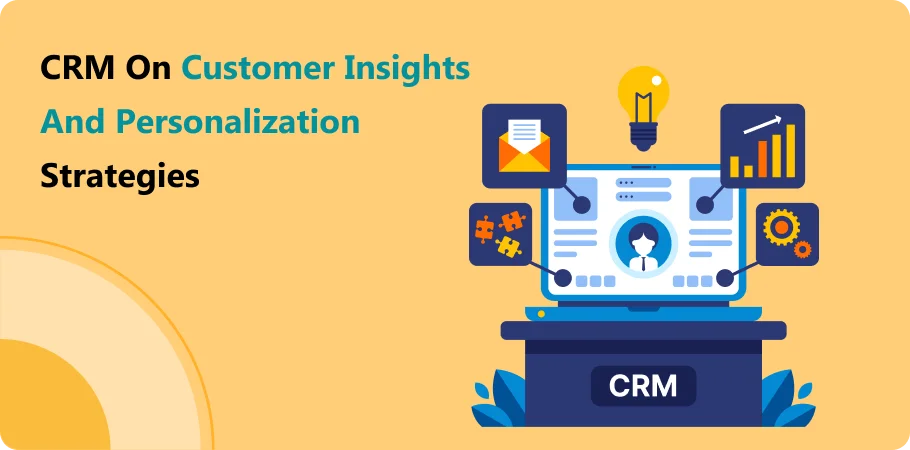
Enhanced Insights:
CRM tools provide deep insights into customer behavior and preferences, enabling businesses to tailor their outreach and nurture leads more effectively with personalized messages and offers.
This results in increased customer engagement, loyalty, and ultimately, sales. By understanding what resonates with different customer segments, businesses can avoid generic marketing blasts and instead craft targeted campaigns that speak directly to their audience’s needs and desires. This personalized approach fosters stronger relationships and positions businesses as trusted advisors, not just product or service providers.
Targeted Campaigns:
By understanding each lead’s specific needs and stages, companies can create more targeted and effective marketing strategies, improving conversion rates.
Targeted messaging resonates better, leading to higher click-through rates and website engagement. Additionally, relevant offers tailored to a lead’s specific needs are more likely to convert, ultimately boosting sales or sign-ups. This personalized approach optimizes the marketing funnel, ensuring the right message reaches the right person at the right time.
Seamless Integration:
CRM systems can be integrated with other sales and marketing tools for a cohesive lead management procedure. This unified approach ensures data flows smoothly between departments, helping sales teams work more efficiently and collaboratively with marketing and other organizations.
Needs Assessment:
Identify your business needs and the specific features required in a CRM to meet those needs. This best practice ensures you select a CRM system that aligns with your sales and marketing strategies.
By focusing on your core needs, you can avoid feature overload and unnecessary costs. Many CRMs offer a variety of functionalities, but not all will be relevant to your specific goals. Prioritizing essential features ensures a smoother implementation and a CRM that truly empowers your sales and marketing teams.
Training and Adoption:
Ensure your team is thoroughly trained on using the new system. Adoption across all departments is crucial for maximizing the CRM’s benefits.
A well-trained team can leverage the CRM’s full potential, leading to improved data accuracy, streamlined workflows, and better collaboration. Consider offering ongoing support and resources to address any questions or challenges that may arise after initial training. This fosters a culture of CRM usage and empowers your team to become customer experience champions.
Conclusion
In conclusion, the journey toward sales success is paved with strategic lead management, innovative lead generation efforts, and the seamless integration of Customer Relationship Management (CRM) systems. These elements are not standalone solutions but are interconnected gears that drive the sales process forward.
Adopting these best practices is not just beneficial but essential for any organization looking to thrive in today’s competitive market. From prioritizing and scoring leads for more effective follow-up to leveraging CRM for deeper customer insights and personalization, each practice builds upon the next, creating a robust framework for attracting, nurturing, and closing deals.
Let this be an example for your business as you define your path to sales excellence. By implementing these practices, you can streamline your sales process and create a more dynamic and responsive sales environment.
Get started for Free
Start for free today. Boost your sales by clicking the Get Started button. With CRMOne, you can manage leads, sales, and customer service all in one place.
